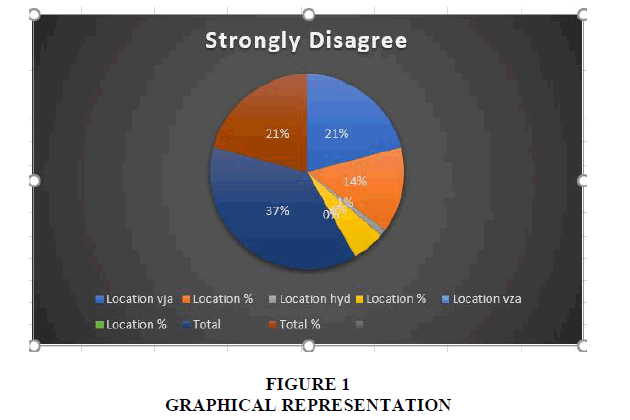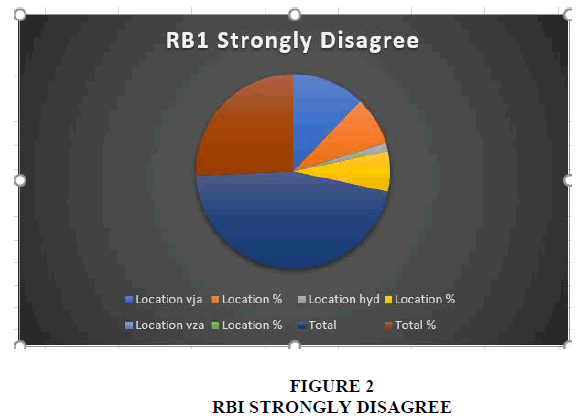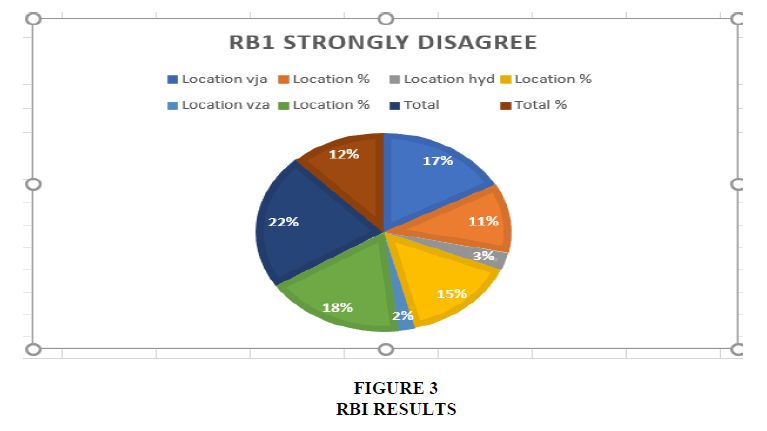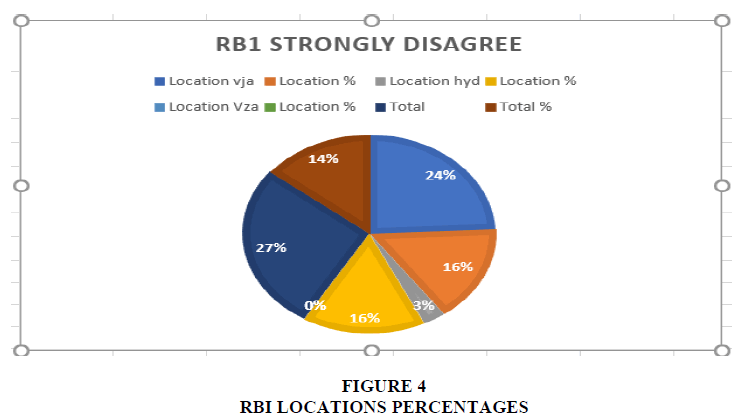Review Article: 2022 Vol: 26 Issue: 4
An Empirical Study on Marketing and Hr Challenges In Construction Industry A Study with Reference To L&T
Venkata Ramana J, Koneru Lakshmaiah Education Foundation
Manila Ratna, Koneru Lakshmaiah Education Foundation (KLEF)
Sai Kalyan Das, Koneru Lakshmaiah Education Foundation (KLEF)
Citation Information: Venkata Ramana, J., & Ratna, M., & Das, S.K. (2022) An empirical study on marketing and HR challenges in construction industry – A study with reference to L&T. Academy of Marketing Studies Journal, 26(4), 1-7.
Abstract
Human Resource Management is the process of hiring, selecting, and inducting employees, as well as providing orientation, training, and development, evaluating employee performance, determining compensation and benefits, motivating employees, maintaining proper relations with employees and their trade unions, and ensuring employee safety, welfare, and health in accordance with local labour laws. Planning, organising, directing, and managing are all management functions in Human Resource Management. It entails the acquisition, development, and maintenance of human resources. It aids in the achievement of personal, organisational, and social goals. Human Resource Management is a subject that spans several disciplines. Management, psychology, communication, economics, and sociology are all covered. It entails teamwork and team spirit. It's a never-ending process. As a department inside a corporation, human resource management is responsible for all elements of personnel management. This article also aims to study the marketing challenges faced by the contraction industry in general and L&T in particular.
Keywords
Recruiting, Selecting, Appraising, Trade Unions, Labour Laws, Planning, Organizing, Directing And Controlling, Marketing Challenges.
Introduction
Larsen & Toubro Limited, an engineering and construction company, is one of India's largest and most reputable private companies. Larsen & Toubro Limited, or L&T, is India's largest multinational corporation, with headquarters in Mumbai, Maharashtra. It was formed in India by two Danish engineers who had sought asylum there. The company has offices all over the world and is involved in engineering, construction, manufacturing, information technology, and financial services. L&T will be a professionally managed Indian multinational dedicated to total customer satisfaction and shareholder value enhancement. L&T will be a forward-thinking, entrepreneurial, and empowered team that is constantly creating value and setting global standards. While meeting the expectations of employees, stakeholders, and society, L&T will foster a culture of caring, trust, and continuous learning.
Literature Review
Samuel & Timmaraju (2015) discuss the issues that Indian construction companies confront in terms of human resources management (HRM). We present a qualitative analysis of an interview-based strategy used by 15 Indian organisations in hi study development Stewart Johnstone, Adrian Wilkinson, and Keith Townsend Because construction demand is very cyclical, keeping a flexible labour force that can expand and contract to meet demand peaks and troughs has been a major concern, resulting in most enterprises staffing for troughs rather than peaks Kilby & McCabe (2008). Human resource management (HRM) in construction: an exploration of issues and practice. In: Dainty, A (Ed) Procs 24th Annual ARCOM Conference, 1–3 September 2008, Cardiff, UK, Association of Researchers in Construction Management 103–112 Ramana & Sridhar (2019). PricewaterhouseCoopers (PwC), (2013), “Industrial & Infrastructure Construction in India,” Report for the The Big5 Construct India, June 2013, pp. 1–9.https://www.thebig5constructindia.com/media/37918/industrial-infrastructue construction-in-indiajune-2013.pdf (Accessed on 14 March 2015.) Rao & Singh (2014) "CSR and construction industry: Can it transform the labour." International Journal of Organizational Behaviour & Management Perspectives 3, (4): 1303–1314, Shah & Sankar (2013) "Human resource management in the changing business environment of the Indian construction industry: a case study," Emerald Emerging Markets Case Studies Du et al. (2007). “A preliminary study on Human Resource Management in International Construction,” The Australasian Journal of Construction Economics and Building, Vol. 7, No 2, pp. 1–11. Harris (2011), “Construction sector poised for further growth as Indian economy forges ahead,” http://www.echarris.com/pdf/7992_International%20Focus%20on%20India%20FINAL.pdf. (Accessed on 14 March 2015) Ramana et al. (2019).
Research Methodology
It is all about multi method inquiry that uses both quantitative and qualitative data access that can lead us to evaluate the subject and also addresses the challenges to know while implementing our process. To implement our research methodology the strategies and our plans should be turned into strategic objectives and goals then only we can implement effectively Pettigrew et al. (1988).
Research Problem
The issues that are causing the delay in the completion of the project. Issues Regarding the relationship between the employees. Change of Location of the employee depending upon the client requirement. Also the marketing challenges faced by the construction industry.
Objectives of the Study
1. To identify HR Challenges Faced by Project Managers & Site Engineers during the completion of the project.
2. To compare HR Challenges of different projects located in different regions.
3. To know whether challenges differ based on region or project cost.
4. To study the Marketing challenges faced by the contraction industry in general and L&T in particular.
Research Gap
Issues Regarding the relationship between the employees and Change of Location of the employee depending upon the client requirement. It is scalable for no. of employees. Better employee retention for most training topics. Guarantees a risk free environment for employees ensures training consistency and standardization Table 1.
| Table 1 Percentage Analysis On Questionnaire |
|||||||||
|---|---|---|---|---|---|---|---|---|---|
| Location | Total | ||||||||
| vja | % | hyd | % | vza | % | % | |||
| RB1 | Strongly Disagree | 19 | 13 | 1 | 5 | 0 | 0 | 34 | 19 |
| Disagree | 18 | 12 | 3 | 16 | 8 | 67 | 47 | 26 | |
| Neutral | 15 | 10 | 12 | 63 | 4 | 33 | 50 | 28 | |
| Agree | 77 | 51 | 2 | 11 | 0 | 0 | 17 | 9 | |
| Strongly Agree | 21 | 14 | 1 | 5 | 0 | 0 | 33 | 18 | |
| Total | 150 | 100 | 19 | 100 | 12 | 100 | 181 | 100 | |
Data Analysis
Resource Based Challenges
Q1. Sanctioned Funds sufficient for buying overall resources of a project.
From the above analysis for the statement “Sanctioned Funds sufficient for buying overall resources of a project” employees from places has responded in this following way that 77% of the employees from Vijayawada has agreed that the funds sanctioned are sufficient & 12% of the Employees from Hyderabad has responded neutrally & 8% of the employees from Visakhapatnam disagreed that the funds which are sanctioned are not sufficient for the completion of the project Table 2 & Figure 1.
| Table 2 Q2. Employees Working For This Project Has High Team Cohesiveness |
|||||||||
|---|---|---|---|---|---|---|---|---|---|
| Location | Total | ||||||||
| vja | % | hyd | % | vza | % | % | |||
| RB1 | Strongly Disagree | 19 | 13 | 1 | 5 | 2 | 17 | 25 | 14 |
| Disagree | 29 | 19 | 3 | 16 | 2 | 17 | 38 | 21 | |
| Neutral | 1 | 1 | 12 | 63 | 1 | 8 | 2 | 1 | |
| Agree | 70 | 47 | 2 | 11 | 6 | 50 | 82 | 45 | |
| Strongly Agree | 31 | 21 | 1 | 5 | 1 | 8 | 34 | 19 | |
| Total | 150 | 100 | 19 | 100 | 12 | 100 | 181 | 100 | |
Managerial Challenges
From the above analysis of the statement “Employees working for this project has high team cohesiveness “employees from Vijayawada, Hyderabad & Visakhapatnam responded in the following way that, 47% of the employees from Vijayawada agreed that the employees working for the project has the high cohesiveness & 63% of the employees neutrally responded the employees are employees in a project are having the required cohesiveness & 50% of the employees from Visakhapatnam agreed to the statement Figure 2 & Table 3.
| Table 3 Q3. Legal Obligations Of The Project Are Been Controlled By The Management Effectively |
|||||||||
|---|---|---|---|---|---|---|---|---|---|
| Location | Total | ||||||||
| vja | % | hyd | % | vza | % | % | |||
| RB1 | strongly Disagree | 24 | 16 | 4 | 21 | 3 | 25 | 31 | 17 |
| Disagree | 30 | 20 | 6 | 32 | 4 | 33 | 40 | 22 | |
| Neutral | 1 | 1 | 0 | 0 | 1 | 8 | 2 | 1 | |
| Agree | 70 | 47 | 4 | 21 | 2 | 17 | 76 | 42 | |
| Strongly Agree | 25 | 17 | 5 | 26 | 2 | 17 | 32 | 18 | |
| Total | 150 | 100 | 19 | 100 | 12 | 100 | 181 | 100 | |
Project Challenges
From the above analysis of the statement “Legal obligations of the project are been controlled by the management effectively” employees from Vijayawada, Hyderabad & Visakhapatnam responded in the following way that, 47% of the employees agreed to the statement that Legal obligations of the project are been controlled by the management effectively & 32% of the employees disagreed to the statement & 33% of the employees from Visakhapatnam disagreed to the statement Figure 3 & Table 4.
| Table 4 Q4. Employees Working For The Project & The Leaders Do Not Have Any Language Problems |
|||||||||
|---|---|---|---|---|---|---|---|---|---|
| Location | Total | ||||||||
| vja | % | hyd | % | Vza | % | % | |||
| RB1 | strongly Disagree | 17 | 11 | 2 | 11 | 0 | 0 | 19 | 10 |
| Disagree | 32 | 21 | 8 | 42 | 2 | 17 | 42 | 23 | |
| Neutral | 32 | 21 | 1 | 5 | 4 | 33 | 37 | 20 | |
| Agree | 36 | 24 | 5 | 26 | 5 | 42 | 46 | 25 | |
| Strongly Agree | 33 | 22 | 3 | 16 | 1 | 8 | 37 | 20 | |
| Total | 150 | 100 | 19 | 100 | 12 | 100 | 181 | 100 | |
Regional Challenges
From the above analysis of the statement “Employees working for the project & the leaders do not have any language problems” employees from Vijayawada, Hyderabad, Visakhapatnam had responded in the following way that, 24% of the employees from Vijayawada had agreed that employees and leaders in a project do not have any language problem’s & 42% of the employees from Hyderabad disagreed to the statement & 42% of the employees from Visakhapatnam had also agreed to the statement Figure 4.
Findings
1. 51% of the Employees from Vijayawada agreed and 63% of the employees from Hyderabad responded neutrally and 67% of the employees had disagreed for the Question that the sanctioned funds are sufficient for buying the overall purchases of the project
2. 73% of the employees from Vijayawada had neutrally and 12% of the employees from Hyderabad disagreed to the statement and 67% of the employees from Visakhapatnam has strongly agreed for the question about no. of employees working for a project are adequate for the completion of the project in time
3. 68 % of the employees from Vijayawada had agreed and 37% of the employees from Hyderabad has agreed to the statement and 42% of the employees from Visakhapatnam has dis-agreed for the Question that Raw materials & Transportation Facilities are adequate in the location of project
4. 51% of the employees from Vijayawada had agreed and 42% of the employees from Hyderabad has agreed to the statement and 42% of the employees from Visakhapatnam has agreed for the Question that employees are having proper skills required for the completion of the project
5. 45% of the employees from Vijayawada had agreed and 37% of the employees from Hyderabad disagreed to the statement and 50% of the employees from Visakhapatnam has dis-agreed for the Question that Credibility of the project completion depends upon the credibility of the project manager.
Conclusion
HR clearance for each infrastructure project should be a pre-requisite. This would require training (new employees) and re-training (existed employees) of both government and private agencies who are involved with the infrastructure projects.
A training programme should be established that combines current project management.
Projects should be created in three phases: (1) planning (including appraisals, feasibility studies, and preliminary design studies), (2) construction (including final design), and (3) operations and maintenance (O&M), with each step having its own management procedure. So that there is a clear vision for the project and it may be completed effectively.
1. From the study, The major marketing challenges faced by the construction industry are
a. Not having an up to date online presence.
b. Not having an online marketing strategy.
c. Following the leader without considering your own company.
d. The impact of Covid-19 Pandemic.
e. Slow Technology Adoption.
f. Stagnated levels of Production.
References
Du, J., Liu, C., & Picken, D. (2007). A preliminary study on human resources management in international construction.Construction Economics and Building,7(2), 1-11.
Harris, E. C. (2011). Construction Sector Poised for Further Growth as Indian Economy Forges Ahead.International Focus on India.
Kilby, A., & McCabe, S. (2008, September). Human resource management (HRM) in construction: an exploration of issues and practice. InProcs 24th Annual ARCOM Conference(pp. 1-3).
Pettigrew, A., Hendry, C., & Sparrow, P. (1988). Changing patterns of human resource management.Personnel Management,20(11), 37-41.
Ramana, J. V., & Sridhar, P. (2019). The movement of industrially applicable yellow metal and its impact on global currencies.International Journal of Recent Technology and Engineering,8(3), 7066-7070.
Ramana, J. V., Reddy, D. H., & Kumar, K. V. An Empirical Study on Marketing of Handloom Fabrics in Andhra Pradesh (A Case Study with reference to Guntur District).
Rao, B., & Singh, S. P. (2014). CSR AND CONSTRUCTION INDUSTRY: CAN IT TRANSFORM THE LABOUR RELATION.International Journal of Organizational Behaviour & Management Perspectives,3(4), 1303.
SAMUEL, C., & TIMMARAJU, K. (2015). Initial assessment of human resources management challenges in the Indian construction sector.International Journal of Earth Sciences and Engineering,8(5), 256-258.
Shah, S., & Sankar, R. A. (2013). Human resource management in the changing business environment of the Indian construction industry: a case study.Emerald Emerging Markets Case Studies.
Received: 10-May-2022, Manuscript No. AMSJ-22-11992; Editor assigned: 11-May-2022, PreQC No. AMSJ-22-11992(PQ); Reviewed: 25-May-2022, QC No. AMSJ-22-11992; Revised: 27-May-2022, Manuscript No. AMSJ-22-11992(R); Published: 30-May-2022



